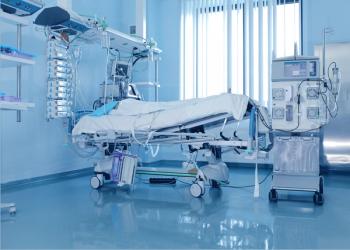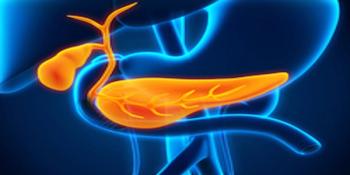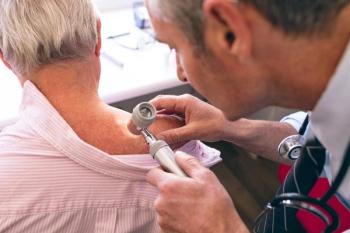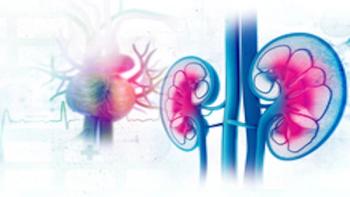
The study highlights differences between patients with systemic lupus erythematosus (SLE) and healthy controls, potentially shedding light on the disease’s underlying mechanisms.
Jared is a freelance writer for The American Journal of Managed Care® (AJMC®), and previously worked as a senior editor for HCPLive® at MJH Life Sciences®.
He has an MA from University of Sioux Falls. You can connect with Jared on LinkedIn.

The study highlights differences between patients with systemic lupus erythematosus (SLE) and healthy controls, potentially shedding light on the disease’s underlying mechanisms.

A subsequent analysis suggested, however, that segmentectomy was preferable to lobectomy in many cases.

Investigators found quality of life (QOL) effects may be tied to patients’ perceptions of cognitive impairment, rather than objective measurements of impairment from systemic lupus erythematosus (SLE).

Investigators found 6 genes associated with cancer-associated fibroblasts that appear to correlate with response to anti-PD-1 immunotherapy.

In patients with liver involvement, intrahepatic cholangiocarcinoma was a common diagnosis among some patients with cancer of unknown primary (CUP).

Although classic methods of risk stratification still hold value, the authors said genetic analysis holds significant promise.

The study showed that introducing the TLR7 variant in an animal model led to the development of autoimmune symptoms and potential development of systemic lupus erythematosus (SLE).

Among a cohort of 88 patients with acute myeloid leukemia who received hypomethylating agents with venetoclax prior to allogeneic hematopoietic cell transplant, 85% had achieved morphologic complete response at 100 days.

A new commentary suggests new pathways might lead to a major shift in the treatment of pulmonary arterial hypertension (PAH).

The finding is important because evidence suggests it is becoming more common for patients to receive care from a general practitioner for skin cancer, versus a surgeon or dermatologist.

Recent studies suggest patients with Parkinson disease (PD) suffer from tooth grinding and related pain at higher rates than healthy controls.

Clinicians should be vigilant and perform neurological and ophthalmological examinations in patients with persistent headaches, the authors said.

Inflammatory microenvironments appear to enhance melanoma cells’ ability to control T-cell responses.

Patients with reduced DNA mismatch repair protein expression were more likely to respond to immune checkpoint inhibitors (ICIs), although this study had a small sample size.

A new review article shows positive trends in survival, as scientists better understand the different types and symptoms of pulmonary arterial hypertension (PAH).

Patient education is an important step toward improving outcomes for racial and ethnic groups disproportionately affected by lupus, but a new report suggests payers and physicians also have more to learn about the problem.

A new review article highlights a number of roles for B1 cells, including antibody secretion and the stimulation of CD4+ cells.

Investigators said these differences might help explain why some patients have better outcomes than others with combination immune checkpoint blockades.

Expression of the chemokine receptor was linked with better overall survival.

The research could pave the way for therapies that target enhancers of disease-related genes.

It is not yet clear what impact proactive screening might have on health care costs and survival outcomes.

Black children with systemic lupus erythematosus (SLE) are at the highest risk of adverse renal outcomes, the study found.

Panic disorders and specific phobias were the mental disorders most often seen among individuals who have chronic thromboembolic pulmonary hypertension (CTEPH), according to new research.

In this case, a patient died 18 months following his transplant after developing de novo intrahepatic cholangiocarcinoma.

Of 5 RNA investigated, 2 correlated with systemic lupus erythematosus and the last correlated with certain inflammation-related symptoms.

Levosimendan appeared to increase in-hospital survival rates, although no long-term survival benefit was reported, among patients with comorbid heart failure and connective tissue disease–associated pulmonary arterial hypertension (CTD-PAH).

Investigators say it may soon be possible to design therapies better at staving off resistance among patients with lymphoplasmacytic lymphoma/Waldenström macroglobulinemia (LPL/WM), which is an incurable disease.

Relapse remains a daunting reality in multiple myeloma, but clinicians have more tools to work with to fight the disease.

A new review article shows diabetes and hypertension are linked with arrhythmia and chronic kidney disease (CKD), but several other less common causes also exist.

The 5-year survival rate over the time period was just 33.8%, the study found.

259 Prospect Plains Rd, Bldg H
Cranbury, NJ 08512
© 2025 MJH Life Sciences®
All rights reserved.
